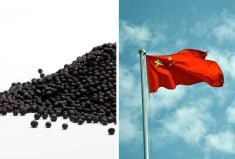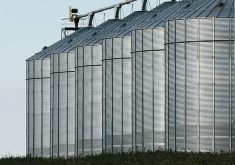Winnipeg (CNS Canada) – After Manitoba grew its largest edible bean crop in more than a decade in 2017, a downturn could be expected in 2018. However, new crop pricing opportunities look favourable and industry participants say it’s still too early to get a firm sense on seeding intentions.
“The pinto market is long in terms of supply, which will have some bearing on the acres for 2018,” said Scott Cottenden, Food Production Manager with Thompsons Limited in Ontario. However, he added that it was still too early to get a firm handle on edible bean acreage ideas in Manitoba and North Dakota/Manitoba.
Read Also

Canada and China discuss disputes over canola and EVs, says Ottawa
Senior Canadian and Chinese officials discussed bilateral trade disputes involving canola and electric vehicles on Friday, Ottawa said, but gave no indication of any immediate breakthrough.
“It depends on what soybeans do going into the spring,” added Peter Klippenstein of AGT Foods in St. Joseph, Manitoba, noting that if soybean prices are looking strong, some edible bean acres could swing into the easier-to-grow crop.
“In Manitoba, there are a core group of growers and companies to facilitate the (edible bean) business,” said Cottenden. However, he added that the explosion of soybean acres in the province was likely taking some interest away.
Manitoba farmers seeded 136,000 acres of edible beans in 2017, which was the largest level since 2007. With excellent yields, total production of 130,400 tonnes came in well above the previous five-year average of 86,000 tonnes. However, Manitoba farmers also seeded a record 2.3 million acre soybean crop in 2017.
Pinto, black, and navy beans are the major beans grown in Manitoba, with new crop prices generally in the 30 to 35 cents per pound area, according to Klippenstein. He said other more specialty varieties were in the 40s and above.
“If growers can produce an average yield, or a little bit better, I think they’ll do well,” said Klippenstein on the current pricing opportunities. “Growers are optimistic about dry beans,” he said adding that beans “have done well for them.”














